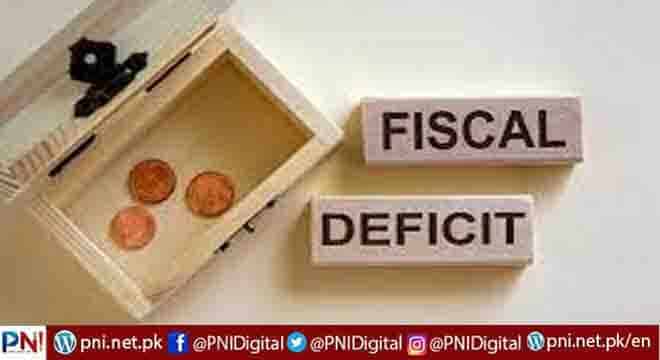ISLAMABAD, Apr 30 (APP):The fiscal deficit was recorded at 4 percent of Gross Domestic Product (GDP) during the first three quarters (July-March) of the current fiscal year (2021-22) against 3.0 percent of GDP (on the basis of revised GDP) last year, says Monthly Economic Update and Outlook, April 2022 released here on Friday.
According to the report released by finance ministry, the current account deficit was recorded at $ 13.2 billion during July-March (2021-22).
The primary balance posted a deficit of Rs 447.2 billion (-0.7 percent of GDP) as compared to surplus of Rs 451.8 billion (0.8 percent of GDP).
During July-March, FY2022, the total revenues grew by 17.7 percent to Rs 5,874.2 billion against Rs 4,992.6 billion in the same period of FY2021.
Within revenues, non-tax collection was reduced by 14.3 percent, while Federal Board of Revenue (FBR) tax collection increased by 29 percent during the period under review.
On the other hand, total expenditure, grew by 27.0 percent to Rs 8439.8 billion during July-March FY2022, against Rs 6,644.6 billion in the comparable period of last year.
Within total expenditures, Public Sector Development Programme ( PSDP) spending increased by 58 percent to Rs 1032.7 billion in July-March FY2022 against Rs 653.9 billion in the same period of last year.
While current spending increased by 21.2 percent to reach Rs 7,378.0 billion as compared to Rs 6,085.4 billion last year.
According to the report, during 1st July to 1st April, FY2022, the money supply (M2) observed growth of 2.7 percent (Rs 665.5 billion) as compared to growth of 6.7 percent (Rs 1,439.5 billion) last year.
The report says, although the economic recovery is underway, the international developments and persistent high domestic inflation might impact domestic economic activities.
Among the determining factors of current trends in both international and domestic inflation are supply chain issues and surging international commodity prices.
It says, under normal circumstances, these prices follow a cyclical pattern; implies that normally, price spikes are followed by a cooling-off period. But, it adds, the current cycles of international food and oil prices were different as the volatility in the markets is high compared to historical standards. Second, due to geo-political tensions, the increasing trend in prices may remain intact.
Follow the PNI Facebook page for the latest news and updates.








